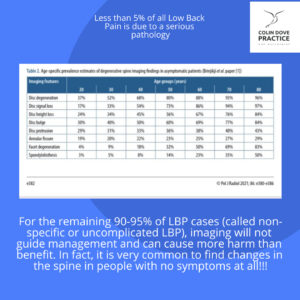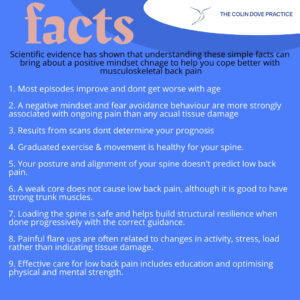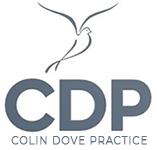
The spine can be divided into five regions:
- Cervical spine (the neck): The first seven vertebrae at the top of the spine.
- Thoracic spine (the back): The twelve vertebrae of the mid-back that are attached to your ribs.
- Lumbar spine (the lower back): The five vertebrae of the lower back.
- Sacrum (the base of the spine): This bone carries all the weight of the body and is the site for many muscles and ligaments to attach to in the hip and pelvic region of the body.
- Coccyx (the tailbone): This tiny triangular-shaped bone consists of four to five fused (joined together) vertebrae.
Your spine plays an essential role in supporting the body’s structure and vital functions. It protects the nervous system, facilitates movement, and enables communication between the brain and the rest of the body.
Nevertheless, despite being such a critical structure in the human body, the spine is often misunderstood, which can lead to unnecessary fear and anxiety about spinal health. This misunderstanding can result in the neglect of proper spinal care, exacerbation of existing conditions, and a hesitancy to seek timely medical advice for spine-related issues.
What are the primary functions of the spine?
The spine performs numerous functions in the body, but some of the primary functions include:
- Protecting the spinal cord, nerve roots, and internal organs.
- Providing flexibility, motion, and our body’s shape.
- Providing structural support and balance for upright posture.
BACK PAIN
Some people may report symptoms of:
Stiffness
Pain/Aching
Reduced range of movement
Postural discomfort
Secondary muscular tightness
Occasionally altered sensation in limbs
Non-specific or mechanical pain is often used to describe degenerative spinal pain. It is often difficult to find a precise cause for pain. Less than 1 in 100 people have a serious problem. It can be caused by an injury but most of the time it can come on for no particular reason. It can be described as ‘non-specific’, ‘simple’ or mechanical pain. This means that following examination, the osteopath is not concerned that you have a serious medical condition. This is the type of pain that is likely to improve over the next few weeks as you gradually return to normal activities and work.

What is degenerative change?
Degenerative change in the spine is a part of normal wear which is associated with ageing and general use. It can cause a degree of alteration to the normal structure and/or function. It is not typically due to a specific injury or trauma.
The normal spine has many bones (vertebrae) and a collection of nerves which branch out in pairs at each level. In between each vertebra there is a disc which acts as a shock absorber and spacer. The discs are made from a soft material which gives the spine flexibility and durability. The vertebrae, discs, ligaments and/or joints can be affected. In some people these changes can also cause irritation to other structures, such as the nerves which exit the spine nearby.
It is entirely normal to have these changes and not experience any symptoms.
How do I manage an acute flare up?
Symptoms will normally get better within a few weeks but there are a few things you can do to help:
Painkillers
Take some simple pain killers or anti-inflammatories such as ibuprofen (ensure that you check with a pharmacist first)
Contact your Pharmacist or GP to ask about other pain killing medication if these don’t suit you.
Try hot or cold packs for symptom relief.
Taking pain relief just before bed may make it easier to get to sleep.
Lying on your side with a pillow between your knees can help to support your spine.
Activity
If pain is really bad you may need a short period of rest but bed rest should be avoided if possible. It should only be necessary
if the pain is so bad that you can’t move around at all
Choose a comfortable position to rest in between activity.
Try to move around for a few minutes every hour to prevent stiffness.
Activity has been shown to be the most effective way of improving pain.
Work
Resume your normal activity and get back to work. A little pain and some restriction are normal.
If you have a difficult or heavy job it may be possible to make some simple changes to make it easier. Speak to your
employer.
Remember – pain does not necessarily mean harm.
Osteopathy
Osteopathy can help you to improve joint mobility and function through exercises and advice
Exercise and Activity
The National Institute for Clinical Excellence (NICE) recommends staying physically active for back pain.
Your osteopath will be able to provide you with some specific exercises that will help your recovery. Regular exercises may also
help to prevent the pain from returning. Increasing activity and exercise can be achieved in a variety of ways. Anything you enjoy from going for a walk, swimming, walking the dog, or cycling to work, to Yoga, Pilates for example.

It is advisable to consult an osteopath or medical professional for advice on any of the above

